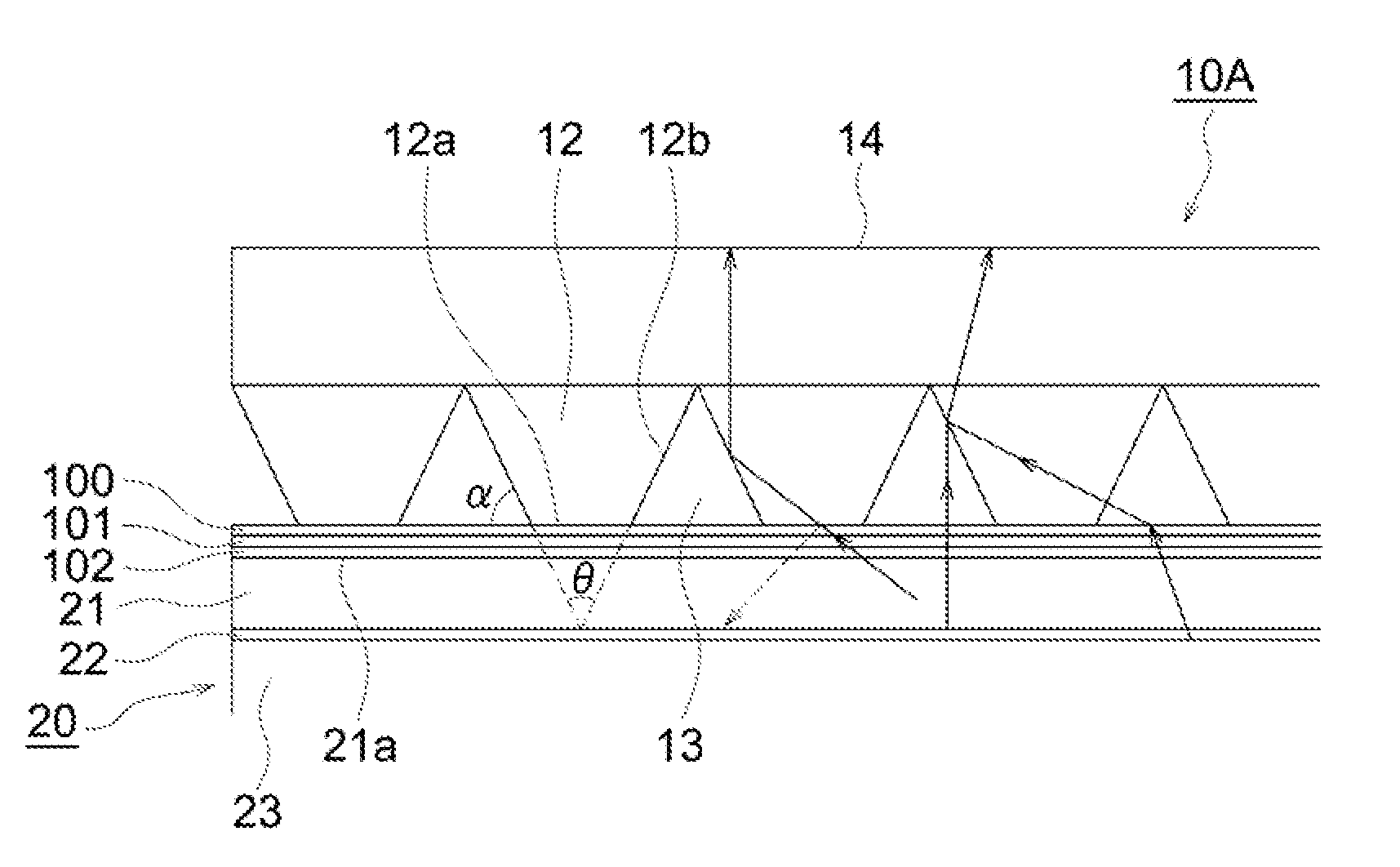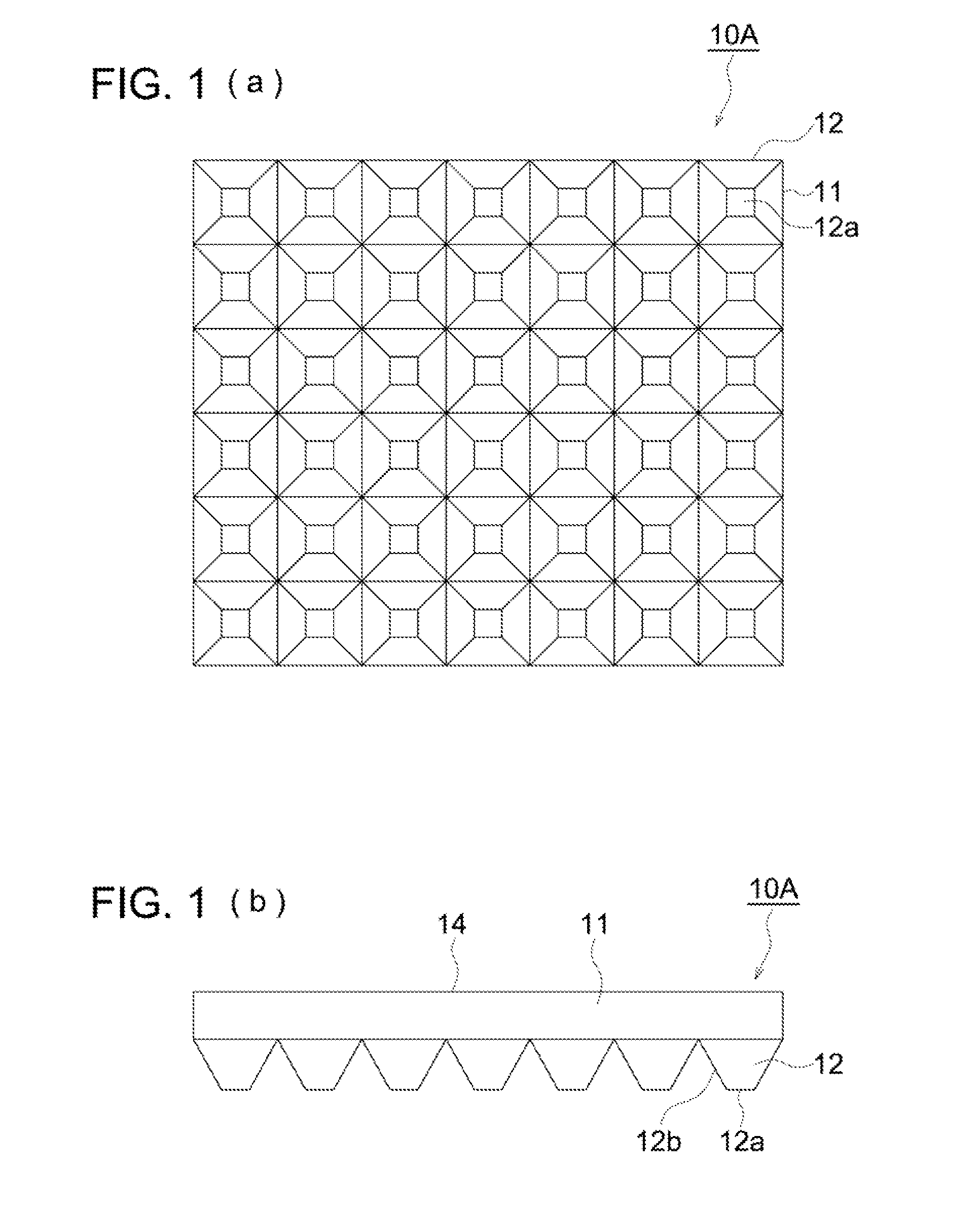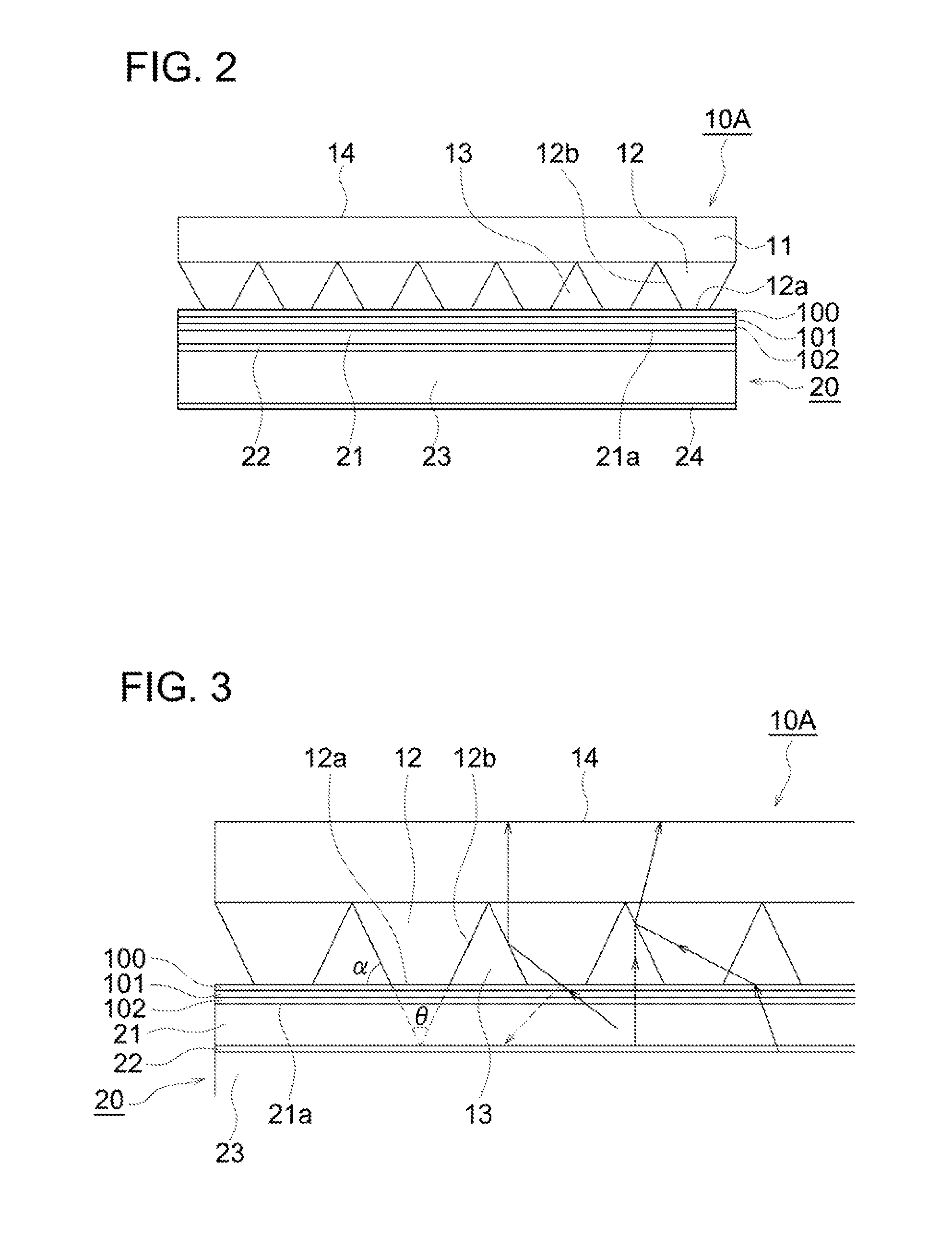Surface luminous body, display device and illuminating device using the same
a technology of surface luminous body and display device, which is applied in the direction of instruments, discharge tube luminescnet screens, optical elements, etc., can solve the problems of difficult inability to obtain sufficient front brightness, and inability to achieve 1000 to 1500 cd/msup>2 /sup> or so, and achieves convenient hand-accessibility, small thickness, and easy to view
- Summary
- Abstract
- Description
- Claims
- Application Information
AI Technical Summary
Benefits of technology
Problems solved by technology
Method used
Image
Examples
embodiment 1
[0059]In Embodiment 1, as a light regulating sheet, as shown in FIGS. 1(a) and (b), a prism array sheet 10A composed of protrusions 12 in the truncated quadrangular pyramid shape having a contracted end side which are continuously formed lengthwise and crosswise on one side of a light transmissive substrate 11 is used. Further, in this specification, contraction of the end side of the protrusions 12 means that the protrusions 12 become gradually smaller as they go away from the prism array sheet 10A and in the examples shown in FIG. 1(b) and FIGS. 2 to 8 which will be described later, is tapered off.
[0060]And, in the surface luminous body of Embodiment 1, as shown in FIG. 2, a surface luminous element 20 composed of an organic EL element in which on the surface of a transparent substrate 21 having an installed transparent electrode 22, an organic EL layer 23 and an opposite electrode 24 are installed is used. Onto a light outgoing surface 21a of the transparent substrate 21 from whi...
embodiment 2
[0074]In Embodiment 2, as shown in FIG. 7, on the light outgoing surface 21a of the surface luminous element 20, the adhesion layer composed of the transparent curable adhesion layer 103 as curable adhesion layer C, transparent resin sheet 101 and transparent pressure-sensitive adhesion layer 100 as pressure-sensitive adhesion layer D and the prism array sheet 10A are laminated in this order and the end faces 12a of the protrusions 12 of the prism array sheet 10A, pressure-sensitive adhesion layer 100, curable adhesion layer 103, and light outgoing surface 21a of the surface luminous element 20 are structured so as to be adhered optically closely.
[0075]As shown in FIG. 8, the neighborhood of the end faces 12a of the protrusions 12 of the prism array sheet 10A is formed so as to be embedded in the adhesion layer composed of the pressure-sensitive adhesion layer 100, the resin sheet 101 and curable adhesion layer 103. The adhesion layer composed of the pressure-sensitive adhesion laye...
example 1
[0150]In Example 1, similarly to the surface luminous body of Embodiment 1, the surface luminous body was formed by adhering the prism array sheet 10A to the surface luminous element 20 using the adhesion layer composed of the first pressure-sensitive adhesion layer A, resin sheet, and second pressure-sensitive adhesion layer B.
[0151]As the surface luminous element 20, as mentioned above, the surface luminous element 20 composed of the organic EL element in which the organic EL layer 23 and opposite electrode 24 were installed on the surface of the transparent substrate 21 having the installed transparent electrode 22 was used.
[0152]Here, in the surface luminous element 20, as the transparent substrate 21, non-alkali glass with dimensions of 0.7 mm (thickness)×40 mm (length)×52 mm (width) was used, and on one side of the transparent substrate 21, as the transparent electrode 22, ITO (indium oxide with tin doped) was coated on it as a film with a thickness of 150 nm, and it was patte...
PUM
 Login to View More
Login to View More Abstract
Description
Claims
Application Information
 Login to View More
Login to View More - R&D
- Intellectual Property
- Life Sciences
- Materials
- Tech Scout
- Unparalleled Data Quality
- Higher Quality Content
- 60% Fewer Hallucinations
Browse by: Latest US Patents, China's latest patents, Technical Efficacy Thesaurus, Application Domain, Technology Topic, Popular Technical Reports.
© 2025 PatSnap. All rights reserved.Legal|Privacy policy|Modern Slavery Act Transparency Statement|Sitemap|About US| Contact US: help@patsnap.com



